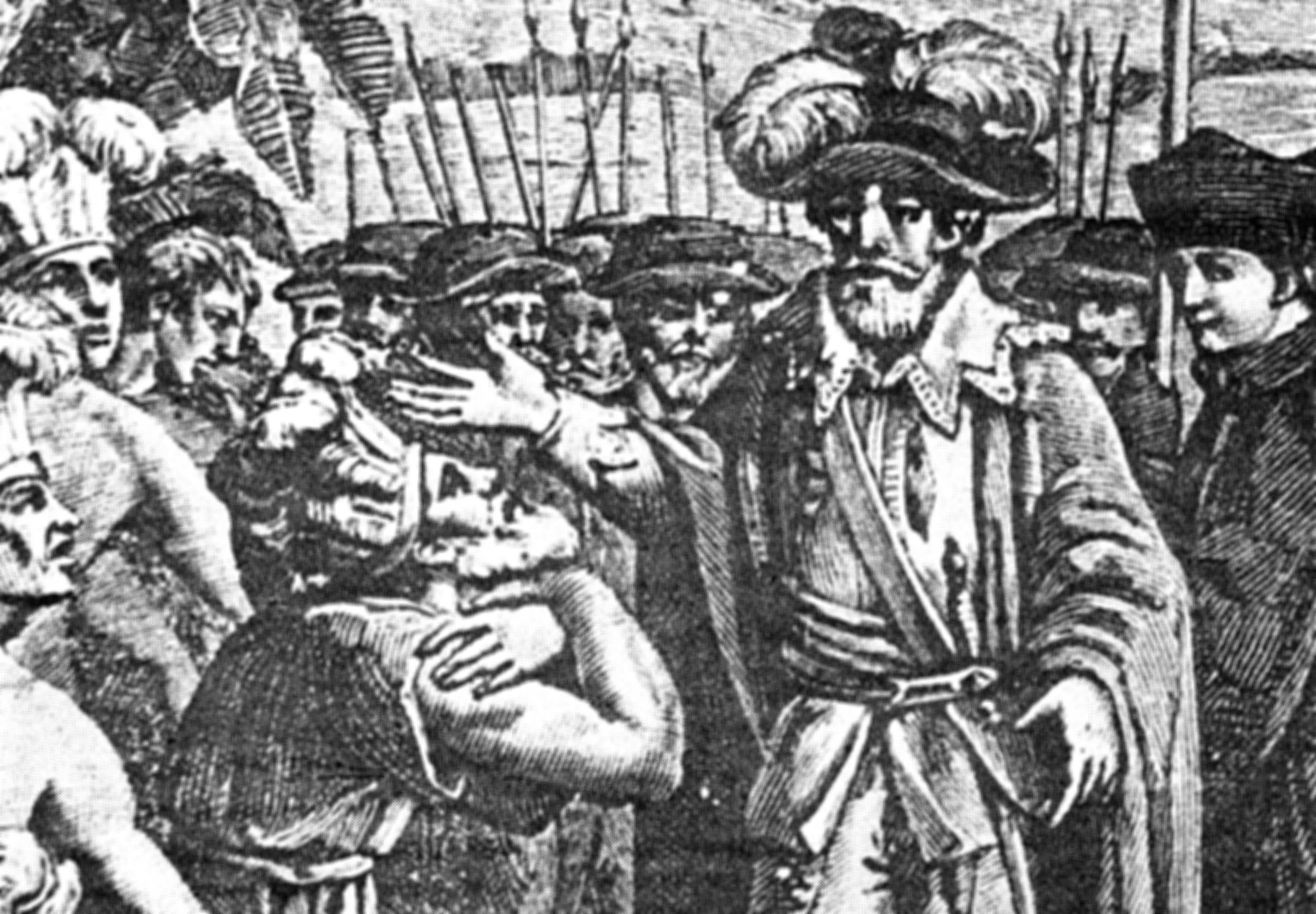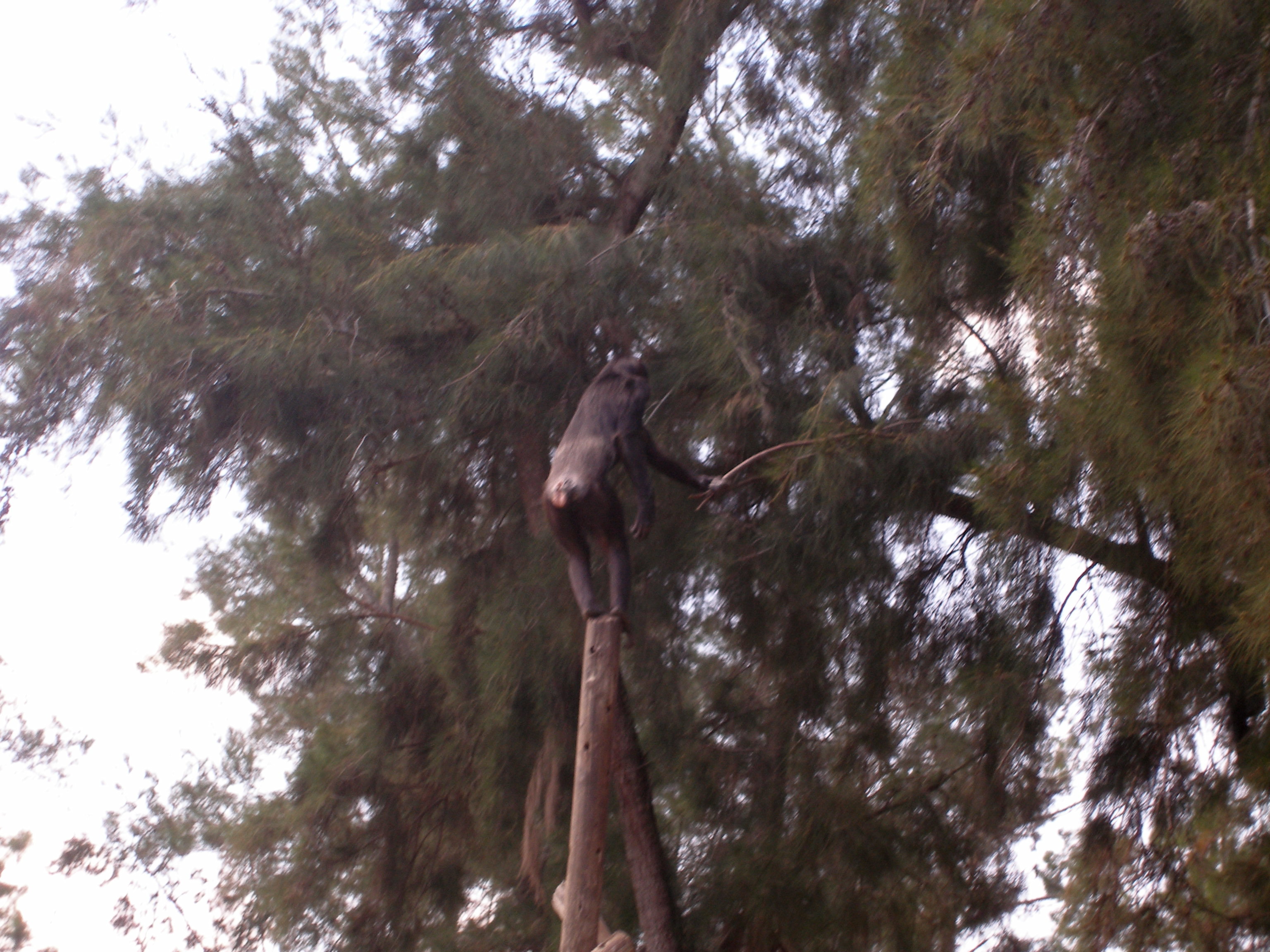|
Pastinha
Vicente Ferreira Pastinha (commonly called Mestre Pastinha) (April 5, 1889, Salvador, Bahia, Brazil – November 13, 1981) was a ''mestre'' (a master practitioner) of the Brazilian martial art Capoeira. Formative Years Pastinha was born to José Pastinha (born Pastiña), a poor Spanish immigrant who worked as a pedlar and Eugênia Maria de Carvalho Ferreira, a black Bahian homemaker. He was exposed to Capoeira at the age of 8 by an African named Benedito.http://www.sport.ifcs.ufrj.br/recorde/pdf/recordeV1N1_2008_1a.pdf The story goes that an older and stronger boy from Pastinha's neighborhood would often bully and beat him up. One day Benedito saw the aggression that Pastinha suffered, and then told him to stop by his house because he was going to teach him a few things. In his next encounter with that boy, Pastinha defeated him so quickly that the older boy became his admirer. From then on, Pastinha had a happy and modest childhood. In the mornings he would take art classes ... [...More Info...] [...Related Items...] OR: [Wikipedia] [Google] [Baidu] |
João Pereira Dos Santos
João Pereira dos Santos or Mestre João Pequeno de Pastinha (27 December 1917 – 9 December 2011) as he was known within capoeira circles. He began his life in Capoeira as a student of Mestre Gilvenson (C. Daniel Dawson's book "Capoeira Angola and Mestre João Grande" cites Mestre Barbosa as João Pequeno's first teacher, ''see Mestre João Grande'') and later became a disciple of Mestre Pastinha - the father of contemporary Capoeira Angola. Together with Mestre João Grande he is later to share the honour of being one of the late Mestre Pastinha's two most learned students - the ones to whom he entrusted his legacy. Mestre João Pequeno died on 9 December 2011 at the age of 93. In 1970, Mestre Pastinha said the following about João Pequeno, "He will be the greatest Capoeira players of the future and I have worked hard with him, and for him, to achieve this. He will be a true master. Not just impromptu teacher, as can be found anywhere, who only destroy our tradition which is ... [...More Info...] [...Related Items...] OR: [Wikipedia] [Google] [Baidu] |
João Grande
João Oliveira dos Santos (born 15 January 1933), better known as Mestre João Grande, is a Grão-Mestre (Grand Master) of the Afro-Brazilian martial art of capoeira angola who has contributed to the spread of this art throughout the world. He was a student of the "father of Angola", Mestre Pastinha, and has an academy in New York City. Early years Mestre João Grande was born in the village of Itagi in the south of the Brazilian state of Bahia. As a child he worked alongside his family in the fields. At the age of 10 he saw "corta capim" for the first time. This is a movement performed by crouching down, extending one leg in front and swinging it around in a circle, hopping over it with the other leg. Fascinated, he asked what it was called and was told that it was "the Dance of the Nagos" — a dance of the African descendants in the city of Salvador. The Yoruba of Southwest Nigeria had a major cultural influence in Salvador, which was considered the Black Rome of Brazil. But t ... [...More Info...] [...Related Items...] OR: [Wikipedia] [Google] [Baidu] |
Capoeira
Capoeira () is an Afro-Brazilian martial art that combines elements of dance, acrobatics, music and spirituality. Born of the melting pot of enslaved Africans, Indigenous Brazilians and Portuguese influences at the beginning of the 16th century, capoeira is a constantly evolving art form. It is known for its acrobatic and complex maneuvers, often involving hands on the ground and inverted kicks. It emphasizes flowing movements rather than fixed stances; the '' ginga'', a rocking step, is usually the focal point of the technique. Although debated, the most widely accepted origin of the word ''capoeira'' comes from the Tupi words ''ka'a'' ("forest") ''paũ'' ("round"), referring to the areas of low vegetation in the Brazilian interior where fugitive slaves would hide. A practitioner of the art is called a capoeirista (). Though often said to be a martial art disguised as a dance, capoeira served not only as a form of self defence, but also as a way to maintain spirituality and cu ... [...More Info...] [...Related Items...] OR: [Wikipedia] [Google] [Baidu] |
Capoeirista
Capoeira () is an Afro-Brazilian martial art that combines elements of dance, acrobatics, music and spirituality. Born of the melting pot of enslaved Africans, Indigenous Brazilians and Portuguese influences at the beginning of the 16th century, capoeira is a constantly evolving art form. It is known for its acrobatic and complex maneuvers, often involving hands on the ground and inverted kicks. It emphasizes flowing movements rather than fixed stances; the '' ginga'', a rocking step, is usually the focal point of the technique. Although debated, the most widely accepted origin of the word ''capoeira'' comes from the Tupi words ''ka'a'' ("forest") ''paũ'' ("round"), referring to the areas of low vegetation in the Brazilian interior where fugitive slaves would hide. A practitioner of the art is called a capoeirista (). Though often said to be a martial art disguised as a dance, capoeira served not only as a form of self defence, but also as a way to maintain spirituality and ... [...More Info...] [...Related Items...] OR: [Wikipedia] [Google] [Baidu] |
Capoeira Angola
Capoeira () is an Afro-Brazilian martial art that combines elements of dance, acrobatics, music and spirituality. Born of the melting pot of enslaved Africans, Indigenous Brazilians and Portuguese influences at the beginning of the 16th century, capoeira is a constantly evolving art form. It is known for its acrobatic and complex maneuvers, often involving hands on the ground and inverted kicks. It emphasizes flowing movements rather than fixed stances; the '' ginga'', a rocking step, is usually the focal point of the technique. Although debated, the most widely accepted origin of the word ''capoeira'' comes from the Tupi words ''ka'a'' ("forest") ''paũ'' ("round"), referring to the areas of low vegetation in the Brazilian interior where fugitive slaves would hide. A practitioner of the art is called a capoeirista (). Though often said to be a martial art disguised as a dance, capoeira served not only as a form of self defence, but also as a way to maintain spirituality and ... [...More Info...] [...Related Items...] OR: [Wikipedia] [Google] [Baidu] |
Salvador, Bahia
Salvador (English: ''Savior'') is a Brazilian municipality and capital city of the state of Bahia. Situated in the Zona da Mata in the Northeast Region of Brazil, Salvador is recognized throughout the country and internationally for its cuisine, music and architecture. The African influence in many cultural aspects of the city makes it a center of Afro-Brazilian culture. As the first capital of Colonial Brazil, the city is one of the oldest in the Americas and one of the first planned cities in the world, having been established during the Renaissance period. Its foundation in 1549 by Tomé de Sousa took place on account of the implementation of the General Government of Brazil by the Portuguese Empire. Centralization as a capital, along with Portuguese colonization, were important factors in shaping the profile of the municipality, as were certain geographic characteristics. The construction of the city followed the uneven topography, initially with the formation of two leve ... [...More Info...] [...Related Items...] OR: [Wikipedia] [Google] [Baidu] |
Brackets
A bracket is either of two tall fore- or back-facing punctuation marks commonly used to isolate a segment of text or data from its surroundings. Typically deployed in symmetric pairs, an individual bracket may be identified as a 'left' or 'right' bracket or, alternatively, an "opening bracket" or "closing bracket", respectively, depending on the Writing system#Directionality, directionality of the context. Specific forms of the mark include parentheses (also called "rounded brackets"), square brackets, curly brackets (also called 'braces'), and angle brackets (also called 'chevrons'), as well as various less common pairs of symbols. As well as signifying the overall class of punctuation, the word "bracket" is commonly used to refer to a specific form of bracket, which varies from region to region. In most English-speaking countries, an unqualified word "bracket" refers to the parenthesis (round bracket); in the United States, the square bracket. Glossary of mathematical sym ... [...More Info...] [...Related Items...] OR: [Wikipedia] [Google] [Baidu] |
Gildo Alfinete
Gildo (died 398) was a Roman Berber general in the province of Mauretania Caesariensis. He revolted against Honorius and the Western Roman Empire (Gildonic war), but was defeated and possibly committed suicide or was assassinated. Etymology The name "Gildo" means "king" in the Berber languages. The vocalisation of the Libyco-berber word GLD gives in modern Berber , "the chief, the king". History Gildo was probably born in the 340s in a Moorish environment which most likely was Mauretania Caesareans that was very much Romanized. Gildo was a Berber by birth. Being a son of King Nubel (''regulus per nationes Mauricas''), he was brother to Firmus. His other brothers were called Mascezel, Mazuca, Sammac, and Dius. He had a sister named Cyria. According to a hypothesis of Stéphane Gsell that was later resumed and developed by Gabriel Camps, Nubel should indeed be identified with Flavius Nuvel, officer of the Roman army, commander of a cavalry unit, the equites Armigeri junior ... [...More Info...] [...Related Items...] OR: [Wikipedia] [Google] [Baidu] |
Loyalty
Loyalty, in general use, is a devotion and faithfulness to a nation, cause, philosophy, country, group, or person. Philosophers disagree on what can be an object of loyalty, as some argue that loyalty is strictly interpersonal and only another human being can be the object of loyalty. The definition of loyalty in law and political science is the fidelity of an individual to a nation, either one's nation of birth, or one's declared home nation by oath (naturalization). Historical concepts Western world Classical tragedy is often based on a conflict arising from dual loyalty. ''Euthyphro'', one of Plato's early dialogues, is based on the ethical dilemma arising from Euthyphro intending to lay manslaughter charges against his own father, who had caused the death of a slave through negligence. In the Gospel of Matthew 6:24, Jesus states, "No one can serve two masters. Either he will hate the one and love the other, or he will be devoted to the one and despise the other. Ye can ... [...More Info...] [...Related Items...] OR: [Wikipedia] [Google] [Baidu] |
Philosophy
Philosophy (from , ) is the systematized study of general and fundamental questions, such as those about existence, reason, knowledge, values, mind, and language. Such questions are often posed as problems to be studied or resolved. Some sources claim the term was coined by Pythagoras ( BCE), although this theory is disputed by some. Philosophical methods include questioning, critical discussion, rational argument, and systematic presentation. in . Historically, ''philosophy'' encompassed all bodies of knowledge and a practitioner was known as a ''philosopher''."The English word "philosophy" is first attested to , meaning "knowledge, body of knowledge." "natural philosophy," which began as a discipline in ancient India and Ancient Greece, encompasses astronomy, medicine, and physics. For example, Newton's 1687 ''Mathematical Principles of Natural Philosophy'' later became classified as a book of physics. In the 19th century, the growth of modern research universiti ... [...More Info...] [...Related Items...] OR: [Wikipedia] [Google] [Baidu] |
Intelligence (trait)
Intelligence has been defined in many ways: the capacity for abstraction, logic, understanding, self-awareness, learning, emotional knowledge, reasoning, planning, creativity, critical thinking, and problem-solving. More generally, it can be described as the ability to perceive or infer information, and to retain it as knowledge to be applied towards adaptive behaviors within an environment or context. Intelligence is most often studied in humans but has also been observed in both non-human animals and in plant intelligence, plants despite controversy as to whether some of these forms of life exhibit intelligence. Intelligence in computers or other machines is called artificial intelligence. Etymology The word ''wikt:intelligence#English, intelligence'' derives from the Latin nouns ''wikt:intelligentia, intelligentia'' or ''wikt:intellectus, intellēctus'', which in turn stem from the verb ''wikt:intelligere, intelligere'', to comprehend or perceive. In the Middle Ages, the ... [...More Info...] [...Related Items...] OR: [Wikipedia] [Google] [Baidu] |
Agility
Agility or nimbleness is an ability to change the body's list of human positions, position quickly and requires the integration of isolated movement skills using a combination of balance (ability), balance, coordination (physiology), coordination, speed, reflexes, physical strength, strength, and endurance. More specifically, it is dependent on: * Balance – The ability to maintain equilibrium when stationary or moving (i.e. not to fall over) through the coordinated actions of our sensory functions (eyes, ears and the proprioceptive organs in our joints); * Static balance – The ability to retain the center of mass above the base of support in a stationary position; * Dynamic balance – The ability to maintain balance with body movement; * Speed - The ability to move all or part of the body quickly; * Strength - The ability of a muscle or muscle group to overcome a resistance; and lastly, * Coordination – The ability to control the movement of the body in co-operation with the ... [...More Info...] [...Related Items...] OR: [Wikipedia] [Google] [Baidu] |

_2015_(22923787115).jpg)





